Learning About Owls
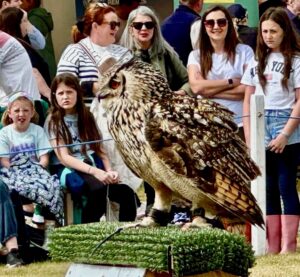 Scotland provides many opportunities to learn more about nature. At the Moy Country Fair last Saturday with Scot friends Patsy and Spence Waddell, I saw and heard a fascinating demonstration of how owls locate their prey by an expert from Elite Falconry. Faithful to my Rice University mascot, the Owl, I’ve long been intrigued by what makes this bird so special. On the website of the British Trust for Ornithology, I found more information about what unique ears owls have. Now that I rely on hearing aids for better sound discrimination; I appreciate knowing more about human and owl hearing.
Scotland provides many opportunities to learn more about nature. At the Moy Country Fair last Saturday with Scot friends Patsy and Spence Waddell, I saw and heard a fascinating demonstration of how owls locate their prey by an expert from Elite Falconry. Faithful to my Rice University mascot, the Owl, I’ve long been intrigued by what makes this bird so special. On the website of the British Trust for Ornithology, I found more information about what unique ears owls have. Now that I rely on hearing aids for better sound discrimination; I appreciate knowing more about human and owl hearing.
The ears of an owl are hidden within the feathers that make up the ruff that surrounds its face. The feathers of the ruff are thick and help channel sound towards the ears. The two ears are asymmetrically positioned, the left ear lower than the right. Such asymmetry generates a tiny amount of separation between when a sound hits one ear compared to the other; this allows an owl to better pinpoint the source of a sound than is the case with human hearing and our symmetrically placed ears
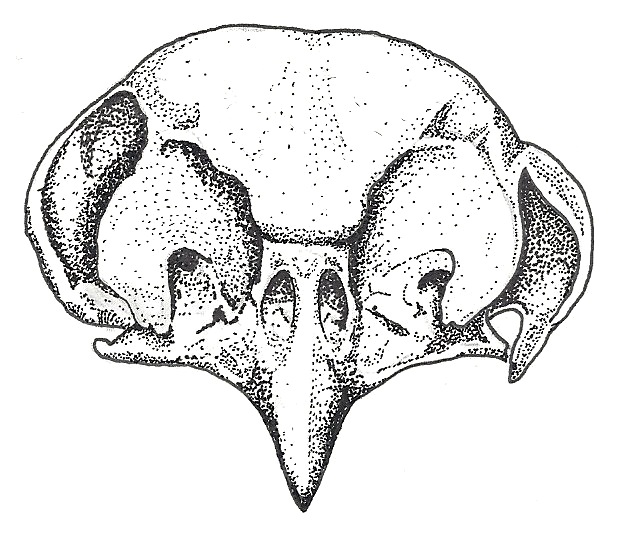 The presenter contrasted the quiet flight of an owl to the noise other birds make swishing through the air. Flying silently, their ears can continue to follow the movements of the prey they have located as they fly toward it.
The presenter contrasted the quiet flight of an owl to the noise other birds make swishing through the air. Flying silently, their ears can continue to follow the movements of the prey they have located as they fly toward it.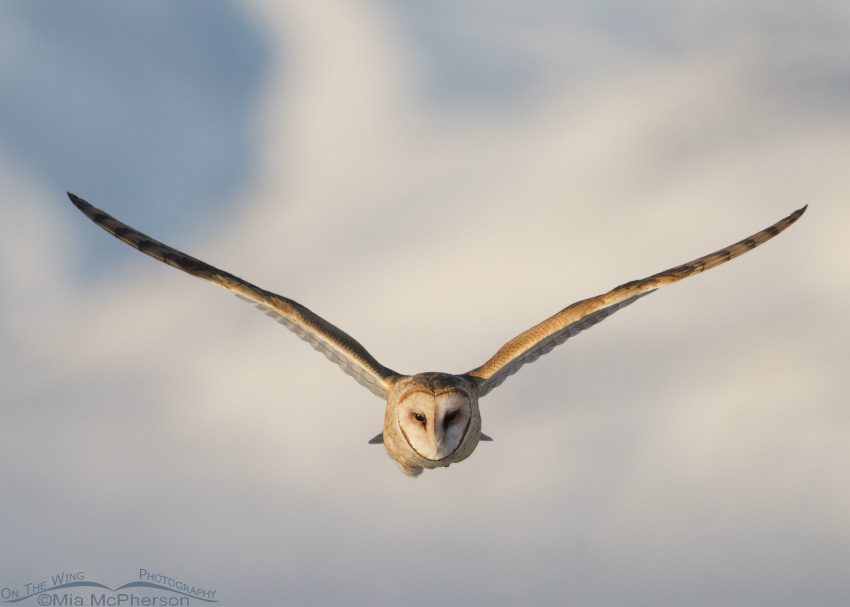
As owls’ ears have evolved to enhance prey location, their eyes have as well.
-
Binocular vision Owls have 3-D vision, similar to humans, where their two eyes’ fields of view overlap. This gives them excellent depth perception, which helps them judge distance and time their attacks.
-
Large eyes Owls’ eyes are large and tube-shaped, which allows more light in and helps them focus on sharp images. They also have a lot of rods, which are cells in the eyes that sense light.
-
Reflective layers Owls have reflective layers behind their retina called tapetum lucidum that re-emit light back onto the retinas.
- Night vision Owls have night vision that’s estimated to be 35–100 times better than humans.
- Nictitating membranes These translucent “third eyelids” close horizontally from the inside corner of owl eyes and are there to protect them from debris when the owl swoops in for the attack.
Now I’m finding owls everywhere! At the Cathedral this morning, I found an owl in a stained glass window, one of a pair on each side of the front door dedicated to the memory of James Lorne Campbell, a local farmer. The window includes a verse from Psalm 150: “Let everything that hath breath praise the Lord.” At a shop named “Barn Owl Bothy,” near the Cathedral, I found a beautiful pillow cover done by local artist Louise Worthy. It’s perfect for my reading chair at home.
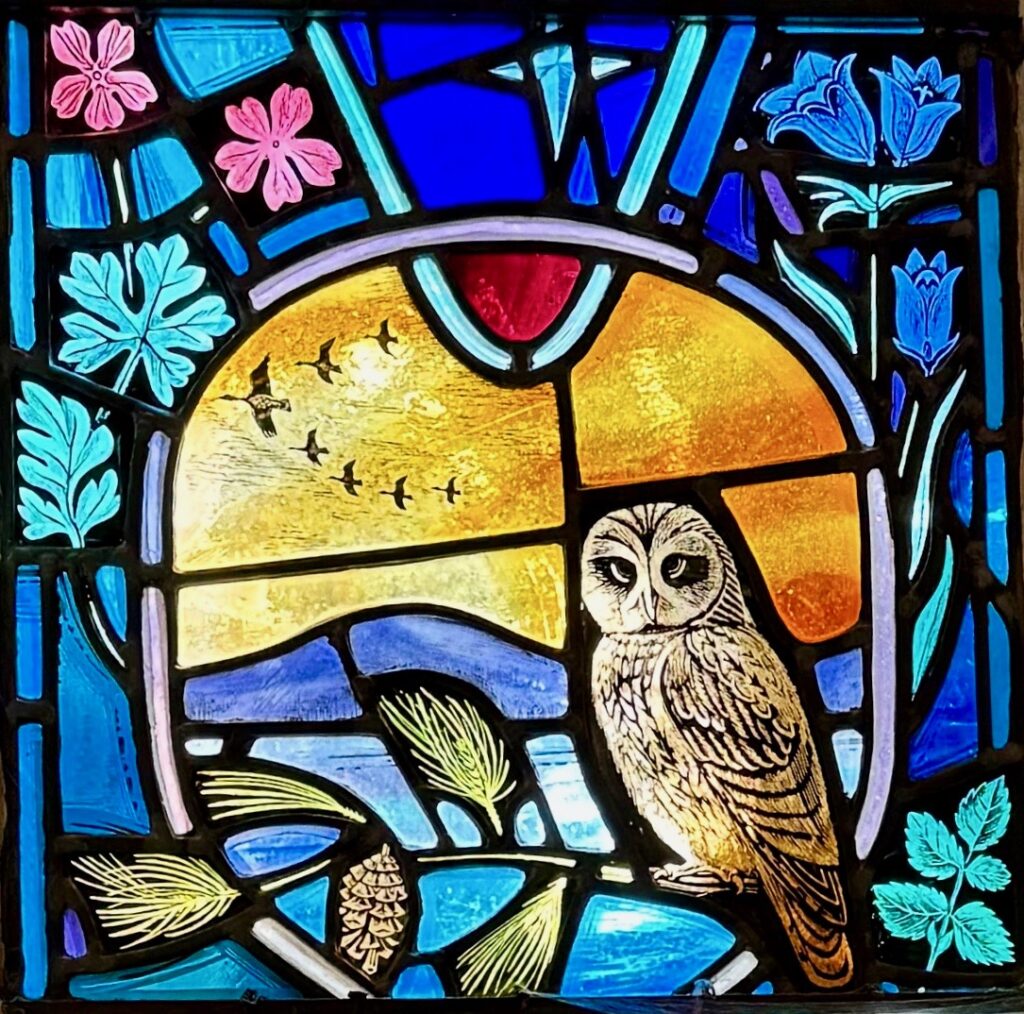
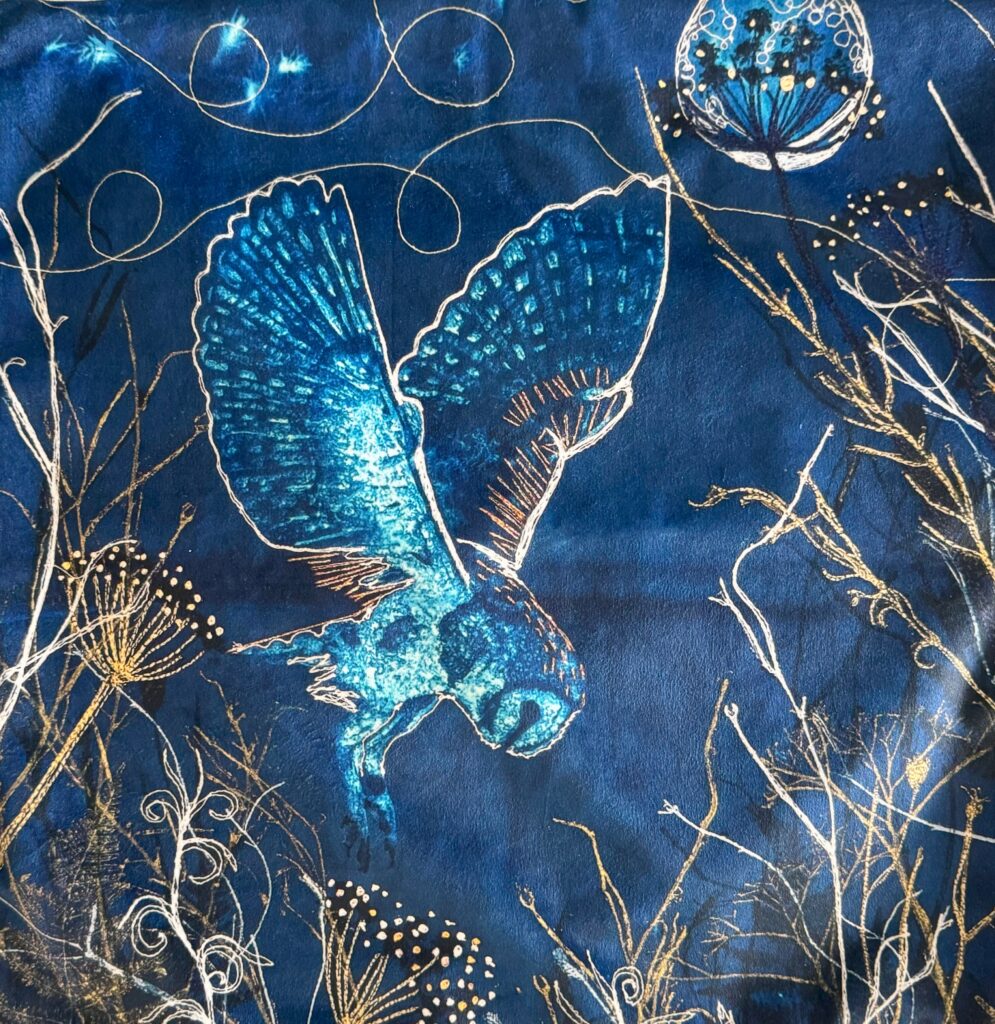
Leave a Reply